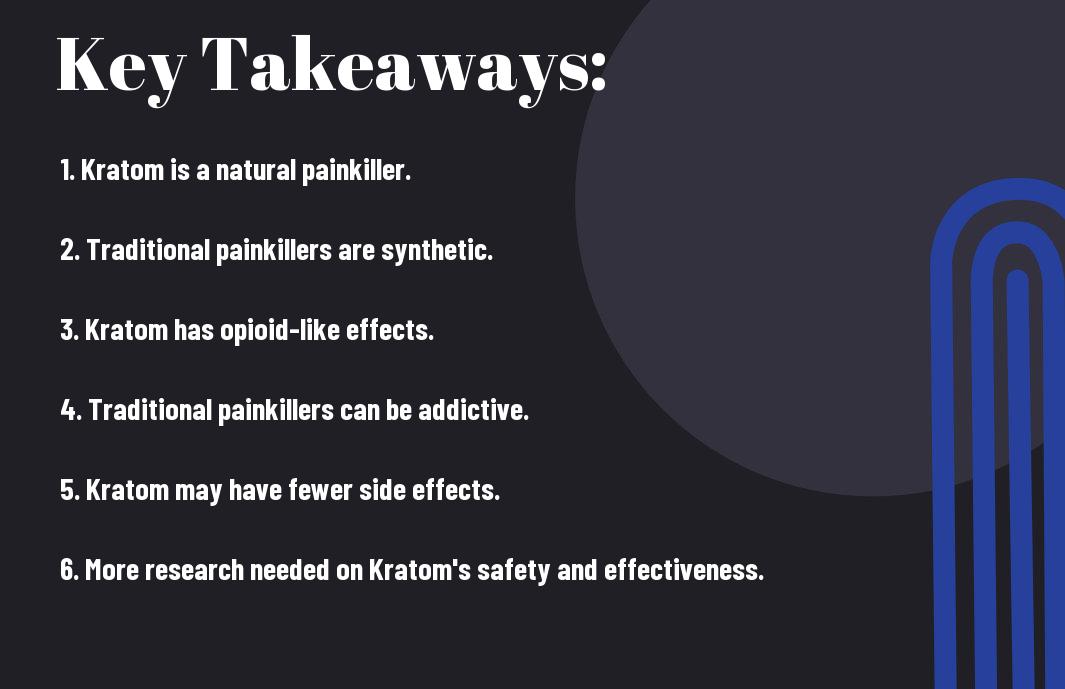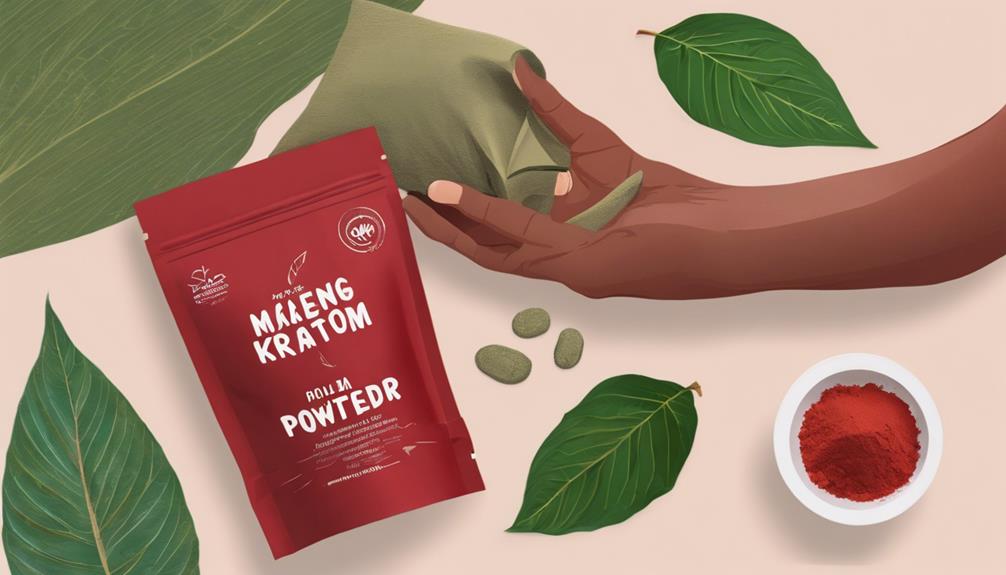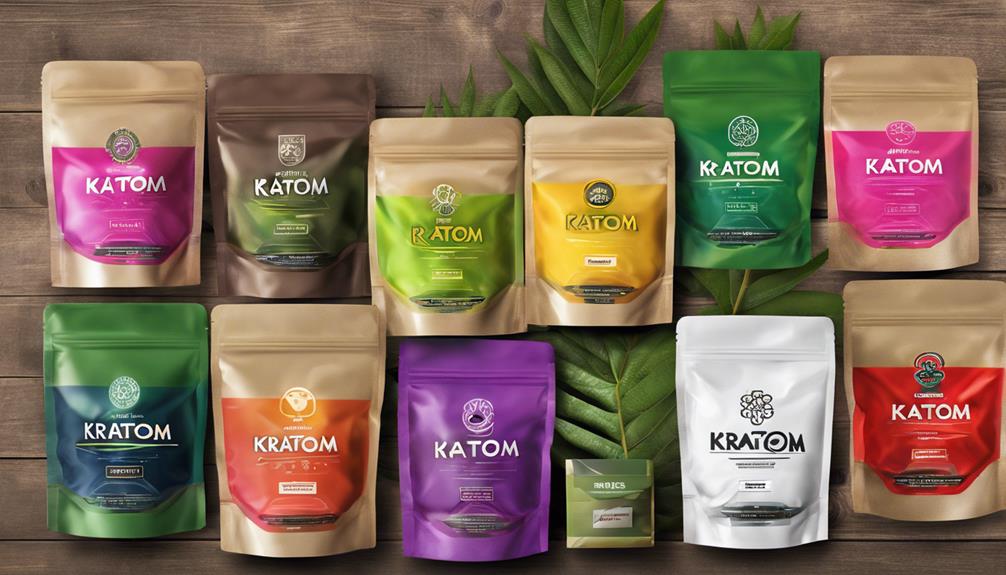Deprecated: mb_convert_encoding(): Handling HTML entities via mbstring is deprecated; use htmlspecialchars, htmlentities, or mb_encode_numericentity/mb_decode_numericentity instead in /home/users/kratomfiles/www/kratomfiles.com/wp-content/plugins/quick-adsense-reloaded/includes/template-functions.php on line 3552
Discovered centuries ago in Southeast Asia, kratom has gained popularity in the United States as a natural alternative to traditional painkillers. With the opioid crisis continuing to ravage the nation, many are turning to this alternative plant for relief from chronic pain. But how does kratom stack up against traditional painkillers in terms of efficacy and safety? In this blog post, we will explore the benefits and potential risks of using kratom as a pain management solution.
First and foremost, it’s important to understand the differences between kratom and traditional painkillers such as opioids. While opioids are derived from the opium poppy plant and can be highly addictive, kratom is a natural herb derived from the leaves of the Mitragyna speciosa tree. This key distinction has significant implications for the potential for addiction and overdose associated with each type of painkiller. Furthermore, we will delve into the effectiveness and side effects of kratom compared to traditional painkillers, providing you with the information you need to make an informed decision about your pain management options.
Key Takeaways:
- Efficacy: Kratom has been shown to be effective in managing pain, similar to traditional painkillers like opioids. However, its effectiveness may vary depending on the individual and the type of pain being treated.
- Safety: While traditional painkillers can have serious side effects and the potential for addiction, kratom has a lower risk of respiratory depression and addiction. However, it is not without its own risks, including the potential for dependency and withdrawal symptoms.
- Regulation and legality: The use of kratom is not regulated by the FDA and its legality varies by state. On the other hand, traditional painkillers are tightly regulated and prescribed by healthcare professionals, ensuring a level of safety and oversight.

Understanding Kratom
Even as Kratom gains popularity as an alternative painkiller, it is essential to understand its potential risks and benefits. According to the Mayo Clinic, Kratom has been classified as unsafe and ineffective for use as a painkiller or for managing opioid withdrawal symptoms. It is crucial to approach the use of Kratom with caution and awareness of its potential drawbacks.
Origin and Cultural History
With origins in Southeast Asia, Kratom has a long history of use in traditional medicine, particularly in countries like Thailand and Malaysia. In these regions, Kratom leaves were consumed for their stimulant effects and as a part of cultural and religious ceremonies. However, the plant’s psychoactive properties also led to its classification as a controlled substance in some of these countries.
Anecdotal evidence suggests that Kratom has been used for centuries to alleviate pain and boost energy levels. However, its modern-day use as an alternative to traditional painkillers requires a closer examination of its chemical composition and potential effects on the body.
Chemical Composition
An in-depth analysis of Kratom’s chemical composition reveals that it contains over 25 different alkaloids, with mitragynine and 7-hydroxymitragynine being the most abundant and potent. These alkaloids bind to opioid receptors in the brain, producing pain-relieving and mood-enhancing effects.
Chemical analysis has also identified other compounds in Kratom, such as flavonoids and terpenoids, which may contribute to its overall effects on the body. Understanding the intricate interplay of these compounds is crucial in evaluating the potential benefits and risks of Kratom use.
Forms and Strains Available
Cultural traditions have led to the development of various forms and strains of Kratom, each with its unique properties and effects. Kratom leaves can be consumed in their raw form, brewed into tea, or processed into capsules, extracts, and powders. Additionally, different strains, such as Bali, Maeng Da, and Borneo, are purported to offer varying levels of pain relief, stimulation, or sedation.
A diverse market offers a wide range of Kratom products, emphasizing the importance of obtaining it from reputable sources and understanding the differences between various strains and forms. As such, consumers should approach the use of Kratom with a discerning eye and a comprehensive understanding of its potential benefits and risks.
Traditional Painkillers
Your search for effective pain relief may have led you to consider traditional painkillers. To make an informed decision, it’s important to understand the options available to you. Before we delve into the comparison, let’s explore the world of traditional painkillers. If you want to learn more about the good, the bad, and the maybe, about kratom, visit The good, the bad, and the maybe, about kratom.
Definition and Classification
With traditional painkillers, the term generally refers to medications that are prescribed by a healthcare professional to relieve pain. These medications can be further classified into nonsteroidal anti-inflammatory drugs (NSAIDs), opioids, and acetaminophen. Each classification has its own set of benefits and risks, and it’s important to understand how they work in the body.
Common Types of Painkillers
Painkillers come in various forms and can be obtained over the counter or through a prescription. Common types of painkillers include ibuprofen, aspirin, codeine, oxycodone, and hydrocodone. Though each medication may offer relief, it’s crucial to use them as directed and be aware of their potential side effects and addictive properties.
| NSAIDs | Opioids |
| Ibuprofen | Codeine |
| Aspirin | Oxycodone |
| Hydrocodone |
It’s important to use painkillers responsibly and be aware of their potential for addiction and dependence.
Mechanisms of Action
Traditional painkillers such as NSAIDs work by inhibiting the production of prostaglandins, which are responsible for causing pain and inflammation. Opioids, on the other hand, work by binding to opioid receptors in the brain and spinal cord to reduce the perception of pain.
Prescription painkillers should be used under the guidance of a healthcare professional to avoid misuse and overdose.
The Science of Pain Management
Keep informed with the latest research and understanding of pain management is essential for making informed decisions about treatment options. Pain is a complex phenomenon that involves a variety of pathways and receptors within the body.
Pain Pathways and Receptors
On a basic level, pain is transmitted through specialized nerve fibers in the body. These fibers carry pain signals from the site of injury or damage to the spinal cord and brain. The brain then interprets these signals as pain. Pain receptors, known as nociceptors, are located throughout the body and are responsible for detecting potentially damaging stimuli. When these receptors are activated, they send signals along the nerve fibers, ultimately leading to the perception of pain.
An understanding of these pathways and receptors is crucial for the development of effective pain management strategies. By targeting specific molecules and pathways involved in the pain response, it may be possible to develop more targeted and effective pain medications.
The Role of Alkaloids in Kratom
Pain relief is often achieved through the use of medications that target the body’s opioid receptors. Kratom contains a variety of alkaloids, some of which act on these same receptors. These alkaloids, including mitragynine and 7-hydroxymitragynine, are thought to be responsible for kratom’s analgesic effects.
One of the key benefits of kratom alkaloids is their potential to provide pain relief without causing the same level of respiratory depression and dependency as traditional opioids. This has led to increased interest in kratom as a potential alternative for managing chronic pain.
Pain relief, alkaloids, opioid receptors, mitragynine, 7-hydroxymitragynine
Opioids vs. Kratom Alkaloids
Pain management with traditional opioids is well-established, but these medications come with significant risks, including the potential for addiction, respiratory depression, and overdose. Kratom alkaloids, on the other hand, may offer a safer alternative for pain management. While they interact with the body’s opioid receptors, they do so in a way that appears to mitigate some of the dangerous side effects associated with traditional opioids.
Research into the potential benefits and risks of kratom alkaloids is ongoing, with some studies suggesting that they may provide effective pain relief with a lower risk of dependency and overdose.
Alkaloids, opioid receptors, respiratory depression, overdose, addiction, kratom alkaloids

Efficacy Comparison
Now, let’s examine the efficacy of Kratom compared to traditional painkillers in terms of pain relief potency and duration of effectiveness.
Pain Relief Potency
An important consideration when comparing Kratom to traditional painkillers is the potency of pain relief. Kratom has been reported by some users to have potent pain-relieving effects, particularly for chronic conditions. However, it may not be as effective as some prescription painkillers for severe, acute pain.
Duration of Effectiveness
With regards to the duration of pain relief, Kratom’s effects are reported to last between three to six hours, depending on the strain and dosage. In comparison, some prescription painkillers may offer longer-lasting relief, but they also carry a higher risk of addiction and side effects.
A potential advantage of Kratom is its milder nature, which may make it a preferred option for individuals seeking relief from moderate pain without the risks associated with stronger opioid-based medications.
User Experience and Testimonials
One aspect to consider when comparing Kratom to traditional painkillers is the user experience and testimonials. Many users of Kratom have reported positive experiences with its pain-relieving effects, particularly for conditions such as fibromyalgia, arthritis, and back pain.
Relief from stress and anxiety is also frequently mentioned in user testimonials, highlighting the potential holistic benefits of Kratom beyond pain relief.

Safety and Side Effects
For individuals seeking pain relief, it is crucial to consider the safety and potential side effects of different treatment options. This chapter will discuss the known risks of traditional painkillers and the side effects associated with the use of Kratom.
Known Risks of Traditional Painkillers
For many years, traditional painkillers such as opioids have been a common choice for managing chronic pain. However, these medications come with significant risks, including the potential for addiction, overdose, and respiratory depression. Long-term use of opioids can lead to physical dependence, making it difficult for individuals to stop taking the medication without experiencing withdrawal symptoms. Additionally, the misuse and abuse of opioids have contributed to a devastating epidemic of addiction and overdose deaths in the United States.
Other traditional painkillers, such as nonsteroidal anti-inflammatory drugs (NSAIDs), can cause stomach ulcers, kidney damage, and cardiovascular issues with prolonged use. These risks highlight the importance of exploring alternative pain relief options that may offer a safer profile with fewer adverse effects.
Side Effects Associated with Kratom
Known for its potential analgesic effects, Kratom has gained attention as a natural alternative to traditional painkillers. However, it is essential to acknowledge the potential side effects associated with Kratom use. Common side effects of Kratom may include nausea, constipation, dry mouth, and increased urination. Additionally, some individuals may experience dizziness, drowsiness, or confusion with higher doses of Kratom.
While some people may find relief with Kratom, it is important to be aware of the potential side effects and to use this botanical with caution. Monitoring for any adverse reactions and consulting with a healthcare professional before incorporating Kratom into a pain management regimen is vital to ensure safety and effectiveness.
– Is Kratom an Effective Alternative to Traditional Painkillers?
Many people believe that kratom shots benefits and effects make it an effective alternative to traditional painkillers. With its natural pain-relieving properties and mood-boosting effects, kratom has gained popularity as a potential solution for managing chronic pain without the harsh side effects of traditional pain medications.
Legal and Regulatory Status
Despite the growing popularity of kratom as an alternative painkiller, its legal and regulatory status remains a topic of much debate and controversy. The confusion arises from the fact that some states and countries have outright banned the use and sale of kratom, while others have more lenient regulations. This makes it essential for individuals to be aware of the laws in their respective areas regarding the use of kratom.
Kratom in the United States
States across the United States have varied stances on the legal status of kratom. While it remains legal in some states, others have imposed restrictions or outright banned its use. As of now, six states – Alabama, Arkansas, Indiana, Rhode Island, Vermont, and Wisconsin – have classified kratom as a Schedule I controlled substance, making its possession and use illegal.
Global Legal Landscape for Traditional Painkillers
An international comparison of the legal status of traditional painkillers reveals a complex regulatory landscape. The legal status of opioid-based painkillers, such as morphine and oxycodone, varies widely from country to country. While some nations have stringent regulations governing the use and distribution of these drugs, others have more relaxed policies.
Legal frameworks for traditional painkillers are influenced by factors such as the prevalence of substance abuse, healthcare policies, and international drug control treaties. These regulations aim to strike a balance between ensuring access to pain relief for patients while mitigating the risks of misuse and addiction.
Ongoing Research and FDA Stance
States continue to conduct research on the safety and efficacy of kratom as a pain management option. The Food and Drug Administration (FDA) has expressed concerns about the potential risks associated with kratom use, including addiction, abuse, and the presence of harmful contaminants. Despite ongoing research, the FDA has not approved kratom for any medical use.
Status of kratom remains a controversial subject, with proponents advocating for its potential benefits and critics highlighting the need for stringent regulations to ensure public safety and wellbeing.
Conclusion
With this in mind, Kratom offers a potential alternative to traditional painkillers, as it has been shown to provide relief for chronic pain, and may offer fewer side effects compared to opioids. However, it is important to continue researching and understanding the potential risks and benefits of using Kratom as a pain-relief alternative. Additionally, it is crucial for individuals to consult with a healthcare professional before incorporating Kratom into their pain management regimen, as it may interact with other medications or have adverse effects on certain individuals.
Overall, Kratom may offer a promising alternative to traditional painkillers, particularly for those seeking natural and potentially less addictive options. However, further research and understanding of its effects are essential before it can be widely considered as a safe and effective alternative to traditional painkillers.
Kratom – How Does It Compare To Traditional Painkillers?
Q: What is Kratom?
A: Kratom is a tropical tree native to Southeast Asia. Its leaves have been used for centuries as a traditional remedy for pain and other health issues.
Q: How does Kratom compare to traditional painkillers?
A: Kratom contains alkaloids that can provide pain relief similar to opioids but without the same risk of respiratory depression. It can be a natural alternative to traditional painkillers.
Q: What are the potential benefits of using Kratom for pain relief?
A: Kratom has been reported to provide relief for chronic pain, arthritis, migraines, and fibromyalgia. It may also have mood-boosting and energy-enhancing effects.
Q: What are the potential risks of using Kratom for pain relief?
A: There is a risk of dependency and withdrawal symptoms with long-term use of Kratom. It can also have adverse effects on liver function and may interact with other medications.
Q: How should someone considering Kratom for pain relief approach it?
A: It is important to consult a healthcare professional before using Kratom, especially if you have any pre-existing health conditions or are taking other medications. It is also crucial to source Kratom from reputable vendors to ensure quality and safety.









